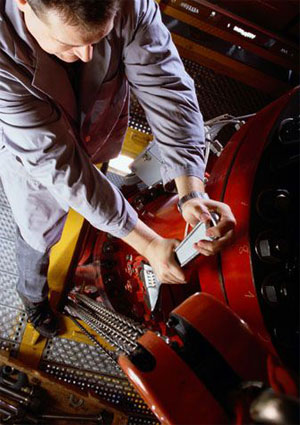Maintenance and Diagnostics Engineer
Tasks & duties

Maintenance and diagnostics engineers may do some or all of the following:
-
study and interpret engineering drawings
-
decide on suitable materials and working methods
-
measure and mark out metals for cutting
-
set and operate machines
-
cut and shape metals
-
check work for accuracy
-
join metal pieces by welding
-
repair machines and their parts
-
carry out maintenance checks on machines and diagnose any faults
-
clean and install equipment and machinery
Skills & knowledge
Maintenance and diagnostics engineers need to have:
-
knowledge of metals and machinery
-
knowledge of mechanical engineering
-
the ability to repair and maintain machinery
-
skill interpreting drawings
-
good communication and listening skills
-
computer skills, including the ability to use computer-aided design (CAD) software and computerised numerical control (CNC) machines
-
welding skills
-
maths skills
Entry requirements
To become a maintenance and diagnostics engineer you need to complete an apprenticeship and gain a National Certificate in Maintenance and Diagnostics in Mechanical Engineering Level 5.
Maintenance and diagnostics engineer apprenticeships are part of the Modern Apprenticeships Scheme, which is for people aged 16 to 21.
Training is also available in the defence forces.
- NZ Army website - information about becoming a maintenance fitter
- Royal NZ Navy website - information about becoming a marine technician
Secondary education
There are no specific secondary education requirements but School Certificate or NCEA equivalent English, maths and science is preferred.
Tertiary education
Employers often prefer that you complete a pre-apprenticeship course before entering the trade.
As well as completing an apprenticeship and National Certificate you can gain a National Diploma in Engineering (Mechanical Engineering) Level 6.
Training on the job
Maintenance and diagnostics engineers may attend training courses to keep up to date with the latest machinery, products and tools.
Useful experience
Useful experience for maintenance and diagnostics engineers includes:
-
any work using hand tools
-
any work with metals
-
operating woodwork or metalwork machinery
-
work as a labourer
-
welding and sheet metal work
Related courses
Mechanical Engineering
Metal Fitting, Turning and Machining
For more information, please refer to Career Services.
Document Actions
